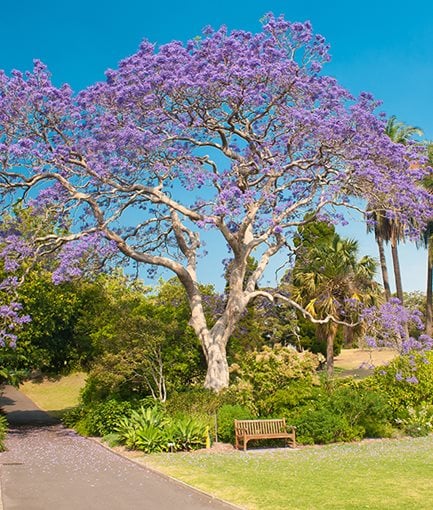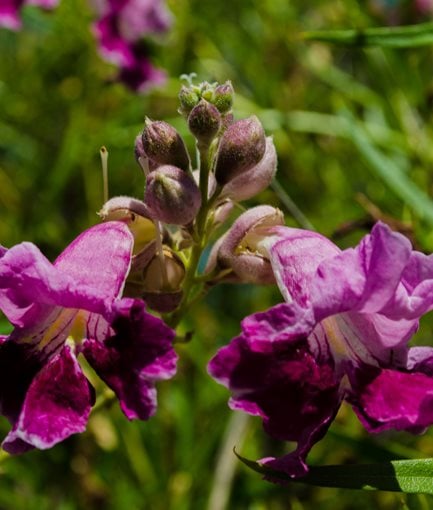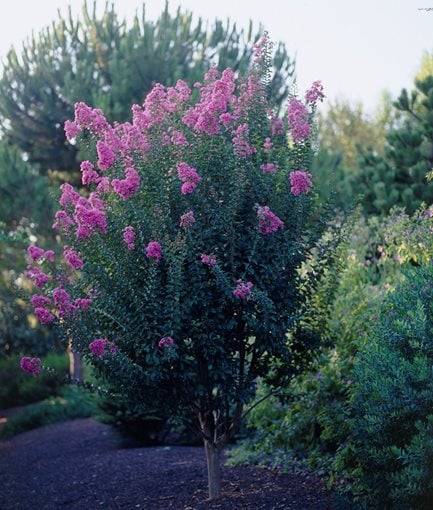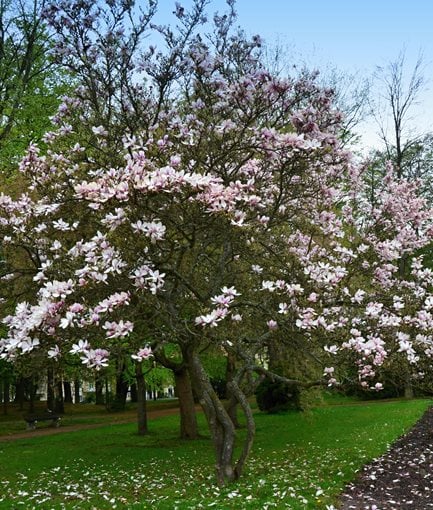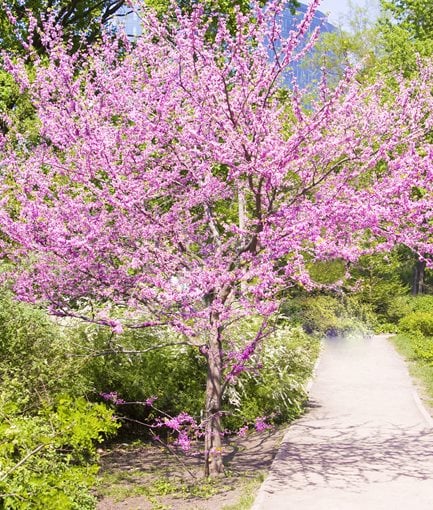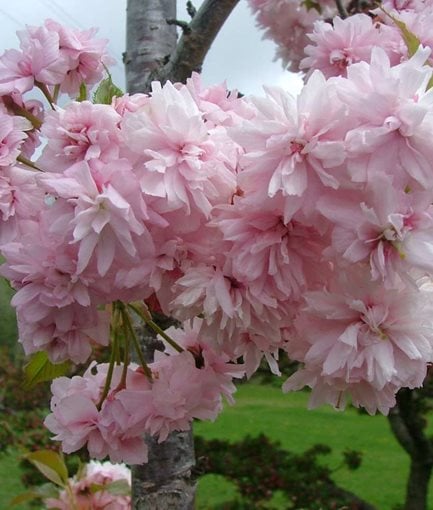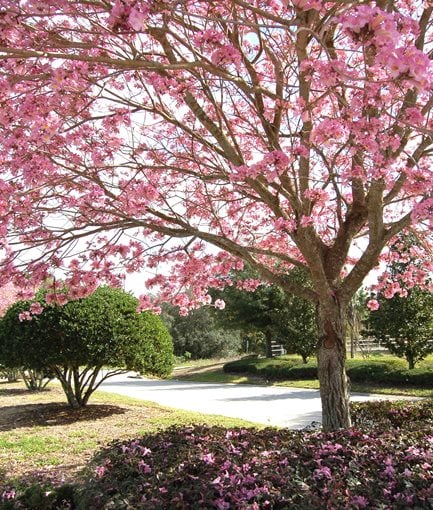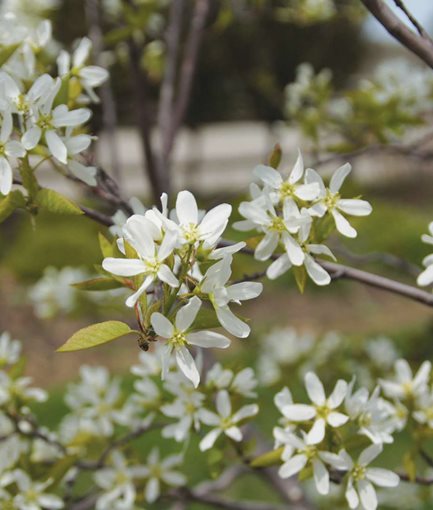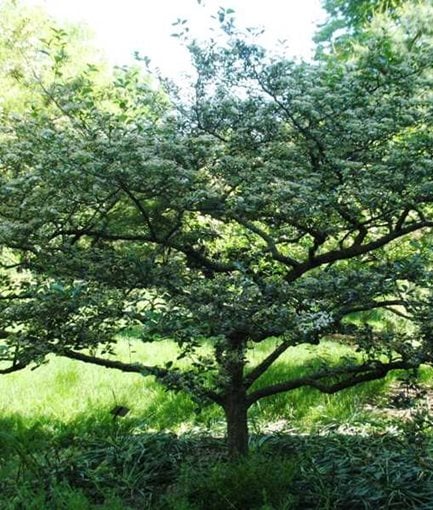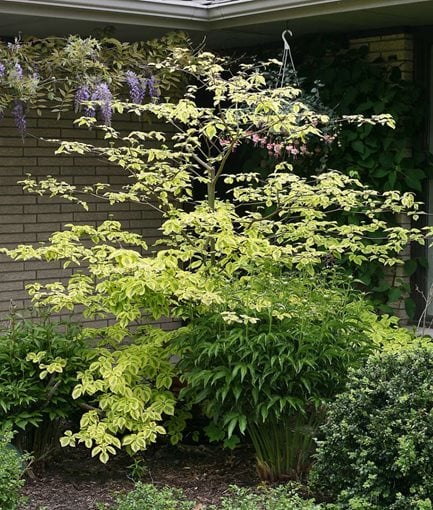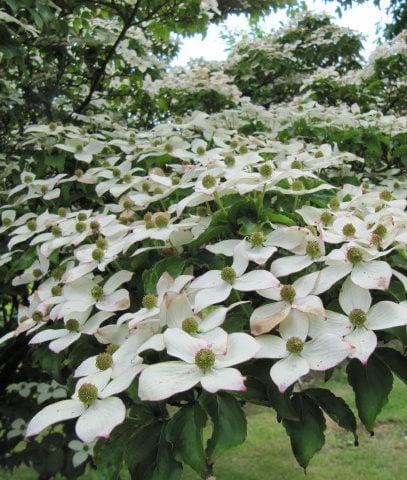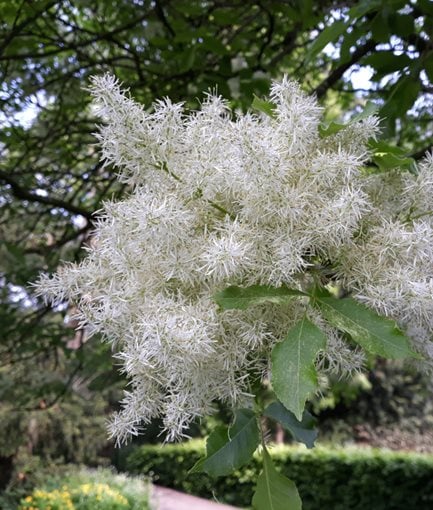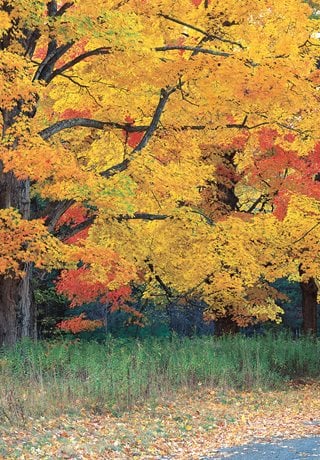The 13 Best Flowering Trees for Your Garden
Favorite flowering tree picks for bright color and reliable performanceFlowering trees can play an important role on the garden canvas, providing a burst of color before the rest of the garden is in full vigor. They offer other advantages as well, allowing the beholder to enjoy their lovely blooms and sweet fragrance without stooping to ground level. Spent blooms give way to vibrant new leaves, followed by interesting and colorful fruits and often stunning fall leaf color. Once the leaves fall, lovely exposed branches and bark keep the show going before the process starts all over again.
All trees are a long-lasting investment, so give it some thought and plant the right tree in the right place. By practicing a little care and common sense, you will be rewarded with a seasonal show of color year after year.
On this page: Trees with Purple Flowers | Trees with Pink Flowers | Trees with White Flowers | Choosing & Caring for Flowering Trees
- TREES WITH PURPLE FLOWERS
- TREES WITH PINK FLOWERS
- TREES WITH WHITE FLOWERS
- CHOOSING & CARING FOR FLOWERING TREES
TREES WITH PURPLE FLOWERS
JACARANDA (Jacaranda mimosifolia)
This tree’s fern-like foliage is almost smothered by panicles of lavender-blue flowers in spring and early summer, followed by woody fruit capsules containing numerous winged seeds. Low-branched specimens can spread 15 to 30 feet.
Zones: 9-11
Height: 25-40 feet
Where to plant it: Plant in full sun and well-drained soil. May be messy, so plant where litter is not a problem.
Best time to prune*: Late winter.
BURGUNDY DESERT WILLOW (Chilopsis linearis ‘Burgundy’)
Very showy pink-burgundy flowers turn into brown capsules much loved by wildlife. Willowy branches and a graceful overall form; a selection of the species native to California, Texas, and Mexico.
Zones: 8-9
Height & spread: 15-30 feet, spreads 10-20 feet.
Where to plant it: Full sun; very drought tolerant once established. Needs good drainage.
Best time to prune*: After flowering; only light shaping and removal of crossing or dead branches needed.
Learn more about how to grow & care for desert willow trees.
CRAPE MYRTLE (Lagerstroemia spp. and hybrids)
Small to medium-size trees with very showy summer flowers, outstanding fall color and beautiful bark. Fruit is a capsule that attracts birds. Purple-lavender cultivars: ‘Muskogee’, ‘Catawba’, ‘Zuni’, ‘Purple Tower’, ‘Cherokee’.
Zones: 7-10
Height: Mostly 20-25 feet tall, upright and spreading habit to 15-20 feet across depending on the cultivar.
Where to plant it: Plant in full sun; forms are standard or multi-trunk.
Best time to prune*: Winter; only light shaping and removal of crossing or dead branches needed.
Learn more about how to grow & care for crape myrtle trees.
Pink flowered cultivars include: ‘Biloxi’, ‘Seminole’, ‘Pink Velour’, & 'Hopi'
White flowered cultivars include: 'Natchez' and 'Acoma'
TREES WITH PINK FLOWERS
SAUCER MAGNOLIA (Magnolia ×soulangeana)
A small multi-trunked deciduous magnolia with large, saucer-like, fragrant blooms in early spring. Flowers are varying shades of pink, emerging before the leaves for a lovely show. There are several cultivars of saucer magnolia, some with yellow fall color.
Zones: 5-9
Height & spread: 20-25 feet high; spreads up to 25 feet at maturity, so give it ample space. Grows about 24 inches per year.
Where to plant it: Plant this spring show-stopper where you can see it from several parts of your garden. Blooming at a young age, plant in full sun to filtered light.
Best time to prune*: Just after flowering to avoid removal of flower buds for next year’s bloom. Only light shaping and removal of crossing or dead branches needed.
EASTERN REDBUD (Cercis canadensis)
This harbinger of spring displays lovely pea-like flowers on bare branches, followed by interesting rounded leaves with good fall color. The trunk commonly divides close to the ground, creating an interesting multi-trunk shape. Several named varieties are available, including ‘Tennessee Pink’, ‘Ace of Hearts’, ‘Hearts of Gold’ (with chartreuse foliage), and ‘Merlot’ (purple foliage).
Zones: 4-9
Height: 20-30 feet
Where to plant it: Full sun in well-drained soil; partial sun in hot climates. Plant as young specimens; this is a tree that does not transplant easily.
Best time to prune*: Structural prune the first winter to determine form, then prune just after bloom thereafter.
Read more about eastern redbud trees.
WEEPING EXTRAORDINAIRE™ FLOWERING CHERRY (Prunus ×'Extrazam')
Fluffy double powderpuff pink flowers cover branches before coppery leaves emerge. Glossy green leaves turn burgundy red in fall. Useful weeping form for specimen.
Zones: 5-8
Height & spread: 15-20 feet high; spreads to about 15 to 20 feet.
Where to plant it: Plant in full sun. Needs good drainage and consistent moisture.
Best time to prune*: Winter or just after flowering; only light shaping and removal of crossing or dead branches needed.
Learn more about how to grow flowering cherry trees.
PINK TRUMPET (Handroanthus heptaphyllus)
Very showy pink trumpet-shaped flowers with an orange-yellow throat; fruit is a long capsule. Useful as a specimen or street tree.
Zones: 10-11
Height & spread: 20-30 feet; upright and spreading habit to 15-25 feet across.
Where to plant it: Plant in full sun; needs well-drained soil..
Best time to prune*: Winter; only light shaping and removal of crossing or dead branches needed.
TREES WITH WHITE FLOWERS
LOLLIPOP® FLOWERING CRABAPPLE (Malus Lollipop®)
A dwarf, compact crabapple with masses of white flowers and a dense, rounded form. Tiny, glossy red fruits attract birds and wildlife.
Zones: 4-8
Height & spread: 8 feet tall; grows 8 feet across.
Where to plant it: Plant in full sun. A very useful tree for small gardens and borders.
Best time to prune*: Only light shaping and removal of crossing or dead branches needed.
Learn more about crabapple trees.
SPRING GLORY® SERVICEBERRY (Amelanchier canandensis‘Sprizam’)
A small, beautifully formed tree with very early spring flowers. Truly four-season interest with tasty summer fruit, outstanding fall color, and a lovely winter silhouette with graceful branches.
Zones: 4-8
Height & spread: 12 feet tall, spreads to 6-8 feet. Grows about 12 inches per year
Where to plant it: Plant in full sun to light shade. Beautiful in woodland settings and native plant gardens; a very desirable bird and wildlife plant.
Best time to prune*: Winter; only removal of crossing or dead branches needed.
Learn more about serviceberry trees.
CRUSADER® HAWTHORN (Crataegus crus-galli var, inermis Crusader®)
A thornless, easy tree that is tolerant of tough urban conditions. White flowers are brief but give way to showy red summer fruit and colorful fall foliage.
Zones: 3-7
Height & spread: 15 feet tall, spreads to 12-15 feet.
Where to plant it: Plant in full sun. Useful in parking lots and street plantings especially.
Best time to prune*: Winter; removal of crossing or dead branches only.
Learn more about hawthorn trees.
GOLDEN SHADOWS® PAGODA DOGWOOD (Cornus alternifolia Golden Shadows®)
With a layered habit and showy foliage, this cultivar of native eastern dogwood brightens dark areas with high drama. Fluffy white spring flowers followed by abundant red fruit; give ample moisture with good drainage.
Zones: 5-8
Height & spread: 10-12 feet tall, spreads to 10-12 feet.
Where to plant it: Plant in filtered light.
Best time to prune*: Winter; removal of crossing or dead branches only.
KOUSA DOGWOOD (Cornus kousa)
Small tree or large shrub with showy late spring flowers; looks as good in a woodland garden as in a shrub border. Flowers are followed by berry-like fruits that attract birds. Leaves turn a gorgeous purple and scarlet in fall.
Zones: 5-8
Height: 15- 20 feet
Where to plant it: Full sun to part shade in organically rich soil with medium moisture. Plant as a single specimen or in groupings.
Best time to prune*: Just after flowering.
Learn more about flowering dogwood trees.
FRINGE TREE (Chionanthus virginicus)
Native to the southeastern U.S., this tree is noted for its lovely panicles of creamy white, fragrant flowers. Purple drupes follow the flowers and are favored by birds and wildlife.
Zones: 4-9
Height & spread: 10-20 feet tall, spreads to 10-20 feet. Grows about 12 inches per year.
Where to plant it: Plant in full sun to filtered light.
Best time to prune*: Winter; removal of crossing or dead branches only.
*PRUNING: Since trees are a long-term investment, we suggest hiring a certified arborist for pruning or tips on pruning your specimen. Arborists will also catch issues with culture, diseases and pests, irrigation, etc.
CHOOSING & CARING FOR FLOWERING TREES
- “The right tree in the right place” and “form follows function” are the key points to remember, says Kelly. Make sure that you have the space required for your tree to thrive, and know what your site and soil conditions are.
- Look around your neighborhood and note which flowering trees are thriving. Also check with your local nursery or extension agent to see what they recommend for your growing zone.
- To promote consistent blooming year after year, most flowering trees need to be kept evenly watered and if fertilizer is required, use organically based products. Also be sure to remove dead or diseased branches as soon as noticed.
- At the nursery, choose tree specimens that look healthy, with well-spaced branches. Check the roots, avoiding circling or kinked root growth. Once this circling growth pattern is established, it’s almost impossible to fix. Check out these online resources for more advice on tree selection:
Tree Selection and Placement (International Society of Arboriculture)
Tree Selection for Urban and Suburban Landscapes (University of Florida)
